Why Invest in India: Unlocking the Growth Potential of Agriculture and Rural Development
India’s journey since the economic reforms of 1991 has been transformative, with the country emerging as one of the world’s fastest-growing economies. However, this growth story hasn’t been uniform across sectors. One area that deserves renewed focus and investment is agriculture and rural development, which not only sustains the livelihoods of nearly 46% of India’s workforce but also plays a crucial role in ensuring food security and promoting equitable growth.
The Post-Reform Decline and Its Impact
The economic reforms of 1991 led to a reduction in public expenditure, and unfortunately, the agriculture, irrigation, and rural development sectors bore the brunt of the cutbacks.
- Public investment in large-scale irrigation projects and rural infrastructure slowed down, leading to stagnancy in irrigation intensity.
- Private irrigation sources did not grow significantly, leaving farmers vulnerable to recurrent droughts and rising input costs.
- This neglect contributed to agrarian distress, as noted by researchers such as Haque (2016).
The Revival in the 2000s
Recognizing the mounting distress, the early 2000s saw policy course corrections:
- Higher budgetary allocations to agriculture and rural infrastructure by states.
- Introduction of rural employment programs such as MGNREGA to ensure income stability.
- Increase in Minimum Support Prices (MSPs) to incentivize farmers.
- Expansion of institutional credit flow, making it easier for farmers to access affordable loans.
This combination of policies had remarkable results:
- Public capital formation in agriculture and input subsidies grew by 6% annually between 2000–2013.
- Private investment grew even faster, at nearly 9% annually (in real terms).
- Irrigation intensity rose from 30% to nearly 50%, boosting agricultural productivity.
- Agricultural GDP grew at 3.8% annually, with several lagging states recording 5-8% growth.
Public expenditure is a catalyst for agricultural growth, and sustained investments are critical to ensuring the sector thrives.
Why Agriculture Needs Continued Investment
The agriculture sector is still a key pillar of India’s economy, and investing here brings multiplier benefits:
1. Food Security and Self-Reliance
With a population projected to reach 1.6 billion by 2050, India needs to ensure adequate food production. Public investments in irrigation, R&D, and infrastructure will help India maintain its food sovereignty.
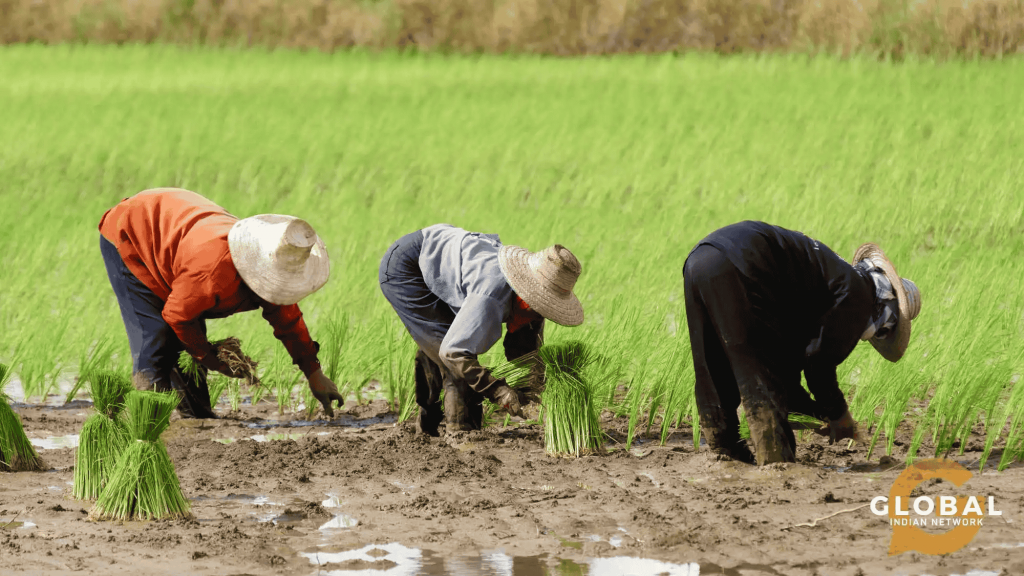 A vibrant Indian Farm Landscape
A vibrant Indian Farm Landscape2. Employment Generation
Agriculture remains a major source of livelihood for rural households. Investments in this sector create direct and indirect jobs, especially for women and youth, reducing rural-to-urban migration.
 A Rural Marketplace
A Rural Marketplace3. Climate Resilience
Climate change poses severe risks to agriculture, with droughts, floods, and erratic rainfall becoming common. Investments in sustainable irrigation systems, crop insurance, and climate-resilient seeds can safeguard farmers’ incomes.
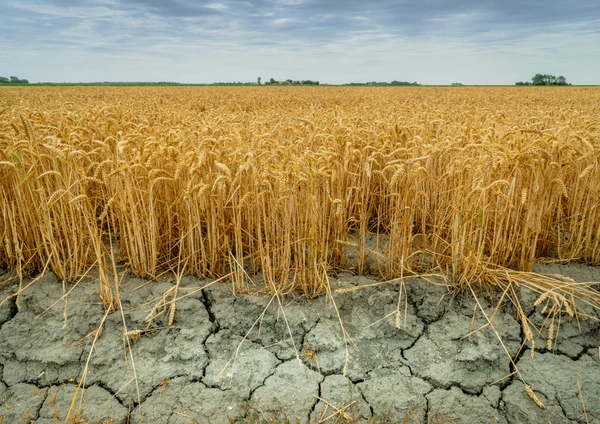
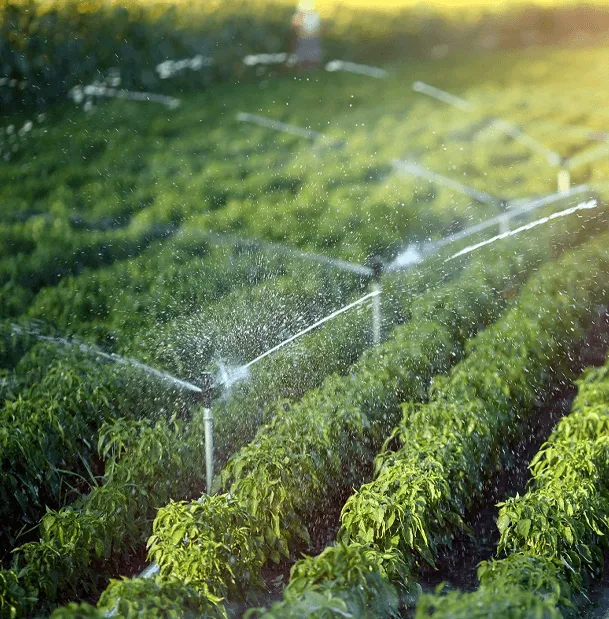
4. Rural Infrastructure Development
Building roads, cold storage facilities, warehouses, and rural markets improves connectivity and reduces post-harvest losses. This attracts private players, creating agro-based industries and boosting rural economies.
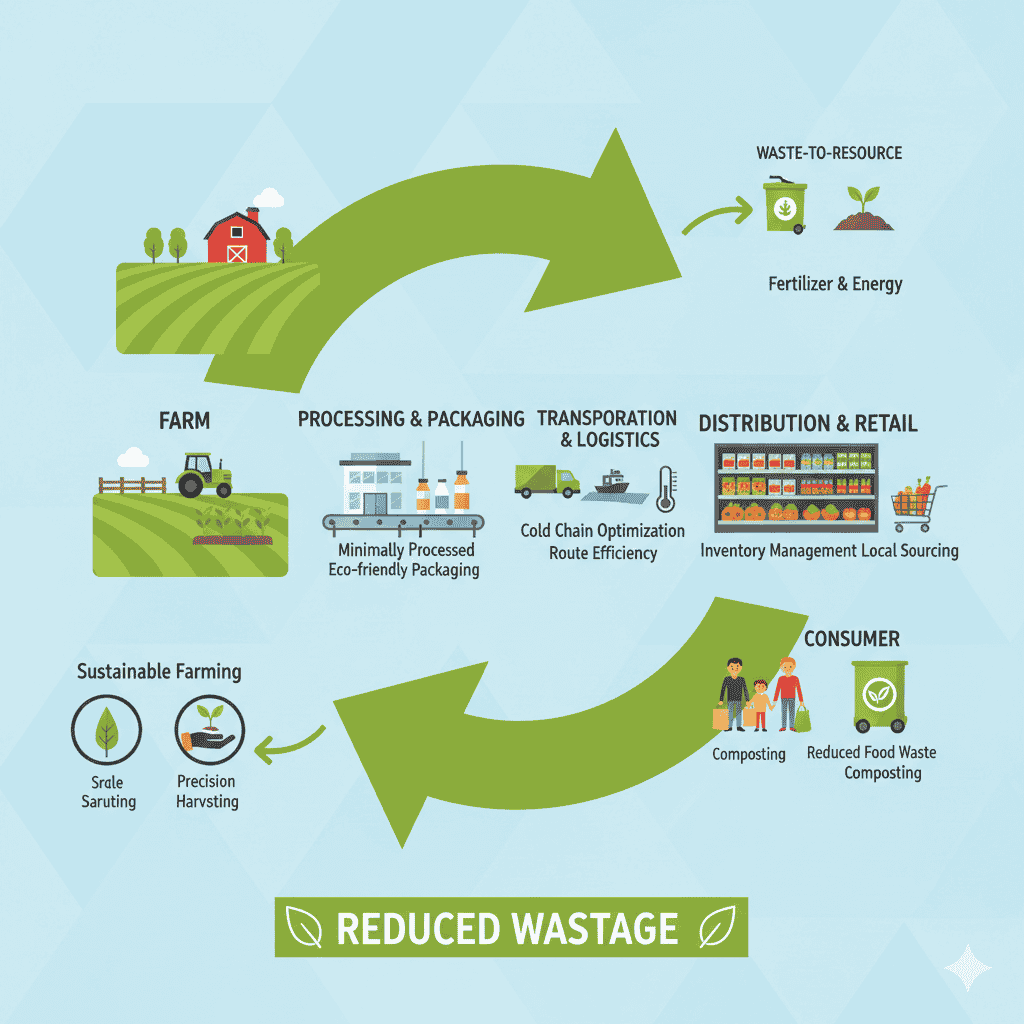 Farm-to-Market Supply Chain with Reduced Wastage.
Farm-to-Market Supply Chain with Reduced Wastage.The Role of the “Invest in India” Movement
The “Invest in India” movement focuses on channeling both public and private investments into sectors that drive inclusive growth. Agriculture is at the core of this mission.
Key pillars of the movement:
- Public-Private Partnerships (PPPs) in irrigation and infrastructure.
- Strengthening digital agriculture, including AI-powered farm analytics and precision farming.
- Expanding financial inclusion for small and marginal farmers.
- Attracting foreign direct investment (FDI) in agro-tech and sustainable practices.
Visual Data Points You Can Add
|
Metric |
1991 Reforms Era |
2000–2013 |
|
Irrigation Intensity (%) |
30% |
50% |
|
Agricultural Growth Rate |
1.8% |
3.8% |
|
Public Capital Formation Growth |
2% |
6% |
|
Private Investment Growth |
3% |
9% |
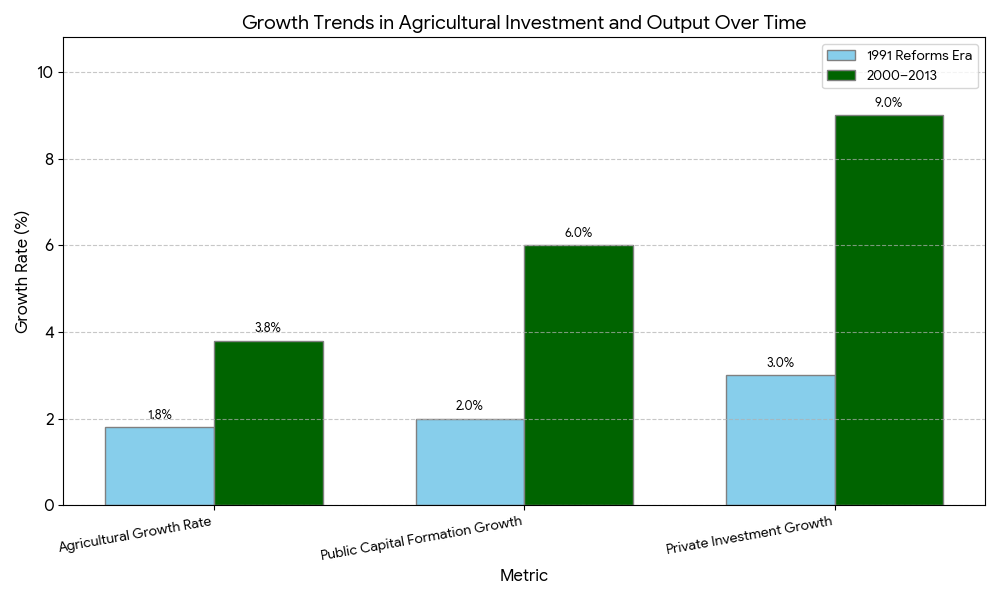 Growth Trends in Agricultural Investment and Output
Growth Trends in Agricultural Investment and OutputConclusion: Building a Prosperous Rural Future
The story of India’s agricultural revival in the 2000s proves that strategic investments can transform the sector. As we move forward, the “Invest in India” movement is an opportunity to:
- Empower rural communities
- Secure food systems
- Drive sustainable growth
By prioritizing agriculture, we are not just investing in farmers—we are investing in the future of India.
References
- Gulati, A., & Bathla, S. (2002). Capital Formation in Indian Agriculture: Trends, Composition and Implications.
- Chandrasekhar, C. P., & Ghosh, J. (2002). The Market That Failed: Neo-Liberal Economic Reforms in India.
- Haque, T. (2016). Agrarian Crisis and Farm Distress in India: Trends and Emerging Issues.
- Chand, R., & Parappurathu, S. (2012). Temporal and Spatial Variations in Agricultural Growth and Its Determinants.
- Ministry of Agriculture & Farmers Welfare, Government of India Reports (2014–2023).

